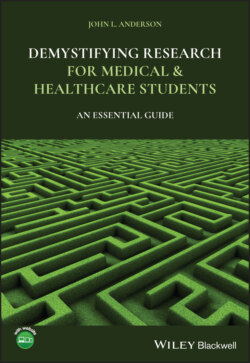Читать книгу Demystifying Research for Medical and Healthcare Students - John L. Anderson - Страница 62
To Sum Up
ОглавлениеPhase I and Phase II clinical trials are the earliest tests of new treatments on human volunteers. The examples shown demonstrate that they are quantitative, hypothetico‐deductive. and experimental.
The difference between these and the majority of experimental approaches we have discussed so far, is that these do not include a control group. They are all tightly controlled and usually conducted under close clinical supervision. They are part of the progression to the next step – Phase III Clinical Trials or Randomised Control Trials.
So, remember, earlier I asked you to consider two questions about Arkenau et al.'s work (2008): (i) What sense do you make of these findings? (ii) What is missing from these trials? In answer to my questions:
1 There is the possibility of their results being due, in a large part, to a placebo effect. There are a lot of negative side effects – including the occasional death.
2 How do we rule out the placebo effect? We use a control group. That is what is missing in the studies they included in their review.
Clinical trials have to be done if we are to develop new medicines. The challenge for us is to make them fair and ethical.
Remember: ‘Research is the art of the possible!’
